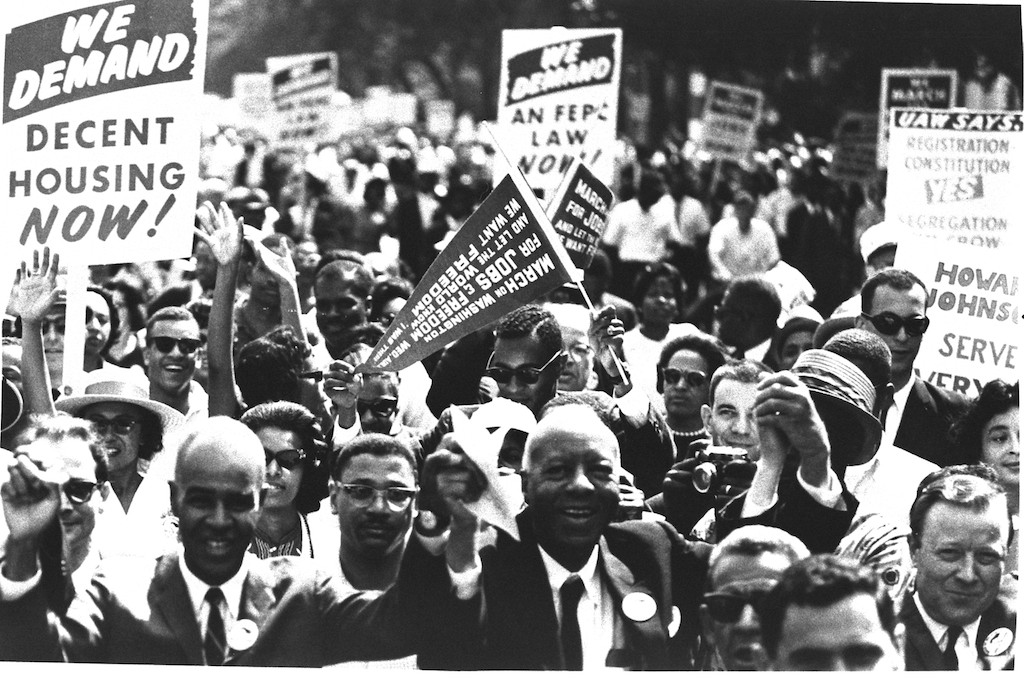Ethnicity

Flag and Symbo of the American Indian Movement
The concept of ethnicity and ethnic identity grew out of the social introspection of the 1960s. Developments in the movement for civil rights for African-Americans were the major contributing factors. As part of the "black power" movement, blacks asserted their distinctiveness, and were reminded that "black is beautiful." African-Americans were urged to be themselves, rather than to try to conform to majority white society. Euro-centric standards of beauty were questioned, and hair and clothing styles more natural to African-Americans were adopted. At the same time, blacks became increasingly visible in mainstream American society, in government, business, the arts and entertainment, sports, and other fields. This was the beginning of a pervasive acknowledgment of the diversity of American faces and experiences. As a result, other Americans who, like African-Americans, did not fit the "all-American" northern European stereotype, began to feel comfortable expressing their unique ethnic identities.
Hispanic-Americans were among the first to follow African-Americans in celebrating their ethnicity. Hispanic-Americans of various national origins became nationally visible in the mid- and late-1960s. In 1964, Joseph Montoya became the first Chicano elected to the U.S. Senate. In 1965, Mexican-Americans rallied around César Chávez as he led the United Farm Workers (UFW) Strike in California. In 1966, some Chicanos organized to form the Federal Alliance of Land Grants to get back land taken from Chicanos since 1848. Because of these events, many Mexican-Americans developed a sense of ethnic pride in "La Raza" ("the race").
In California, some young Mexican-Americans formed the Brown Berets, patterned after the Black Panthers. Also inspired by the Black Panthers, young Puerto Ricans in East Harlem, New York, formed the "Young Lords" in 1968 because of concern about social and economic deprivation in poor urban neighborhoods. Cuban-Americans were more visible in American culture, partially as a result of the Cuban refugee airlift program and other U.S. attempts to intervene in Cuban affairs. The numbers of Cubans in the United States grew under the permissive immigration quotas. In addition, President Johnson signed an immigration bill in 1965 which eliminated race, creed, and nationality as a basis for admitting immigrants to the US. When the old system was removed, immigration from non-European countries, including Caribbean countries, rose dramatically.
Ethnic consciousness in other non-white groups, such as Asian Americans, would not emerge on a large scale until after the 1960s. Near the end of the decade, however, many European-Americans experienced an increased ethnic consciousness. Some were spurred on by the visibility of other ethnicities and relative invisibility of their own. Others, such as Jewish-Americans, were influenced by external events. The 1961 war crimes trial of Nazi Adolf Eichmann, responsible for the "Final Solution" extermination of millions of Jews, brought international attention to the enormity of the Holocaust. This event served to sow the seeds of ethnic awareness in the minds of many American Jews, although it was not yet clear to many whether their Jewishness extended beyond religion to ethnicity. When Israeli security was threatened in 1967 in the events leading up to the Six Day War, many American Jews were disappointed and angered at the lack of response and support from the American government, the African-American community, and the American Christian community. The Six Day War was covered heavily by the news media, bringing all the developments daily to the living rooms of Jews across the Untied States. The tension of events leading up to the war and the celebration following Israel's victory contributed greatly to a sense of solidarity and nationalism among Jewish American Jews and completed the transformation of the Jewish community from a purely a religious grouping to an ethnic group
As the 1960s came to a close, many Americans had begun to consider their ethnic heritage as something to be celebrated, rather than downplayed for the sake of conformity. Something of an acknowledgment of diversity developed, especially in urban areas. Although it helped free many Americans from some social pressures to conform to an ideal created for white Anglo-Saxon Protestants, it also contributed to a factionalism, exclusivity, and "me"-centered view of life. The "melting pot" theory was clearly rejected, and was replaced by a "salad bowl" idea in which different groups could coexist as one nation without sacrificing their distinctiveness. Many began to believe that the American experience was a multi-faceted one, defined on an individual basis. Conforming to one idea of what it meant to be an American was losing its appeal, and an increasing number of people were accepting many different approaches to being American as equally valid.
.
 >
>